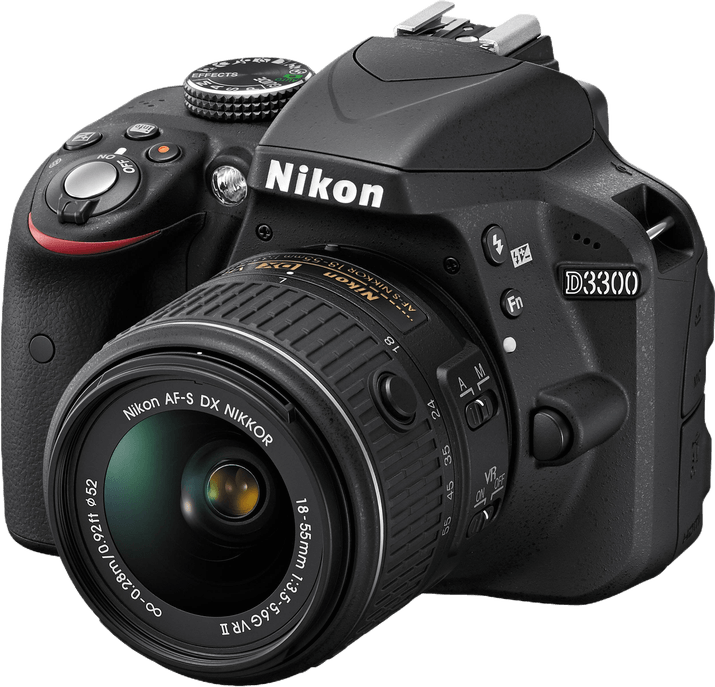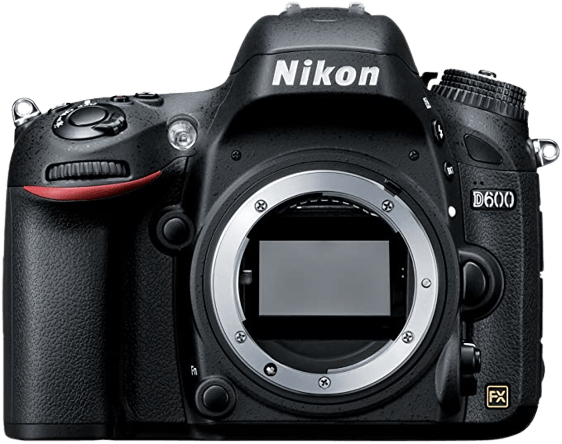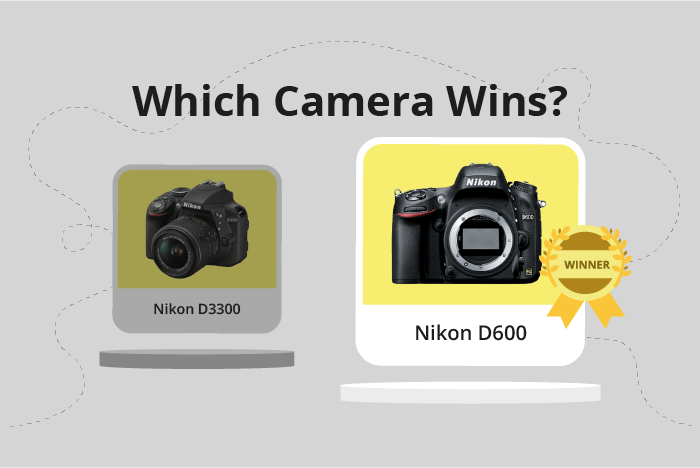Nikon D3300 vs D600 Comparison
Nikon D3300

Nikon D600

The Nikon D600 outperforms the Nikon D3300 with a score of 66/100, while the D3300 scores 55/100. Both cameras are DSLRs, announced in 2012 and 2014 respectively. They share similarities in camera type and dimensions, with the D3300 measuring 124 x 98 x 76mm and weighing 430g, while the D600 is slightly larger at 141 x 113 x 82mm and heavier at 850g.
The D600 offers better performance, which is reflected in its higher score. However, the D3300 has its advantages, such as being lighter and more compact, making it easier to carry around. The D3300 is also more affordable, with a launch price of $650 compared to the D600’s $2100.
Taking these factors into account, the Nikon D600 is the better camera in terms of performance, but the Nikon D3300 provides a more budget-friendly and portable option for those who prioritize these aspects.
Nikon D3300 vs D600 Overview and Optics
The Nikon D600 emerges as the winner in the optics comparison with a score of 70/100, while the Nikon D3300 scores 64/100. Both cameras share some common specifications, such as 24 megapixels, CMOS sensor type, Nikon F lens mount, and the absence of image stabilization. Additionally, they have the same shooting speed of 5 frames per second.
The Nikon D600 excels with its full-frame sensor size and a higher DXOMARK score of 94 for the sensor, compared to the Nikon D3300’s APS-C sensor size and a DXOMARK score of 82. The full-frame sensor provides better image quality, especially in low light conditions, and a shallower depth of field. The higher DXOMARK score indicates the D600’s superior overall image quality.
On the other hand, the Nikon D3300 has an advantage with its Expeed 4 processor, as opposed to the Nikon D600’s Expeed 3 processor. The Expeed 4 processor contributes to faster image processing and better overall performance. However, this advantage is not enough to outshine the D600’s superior optics.
In terms of optics, the Nikon D600 is the better choice due to its full-frame sensor size and higher DXOMARK score, resulting in improved image quality. The Nikon D3300’s faster processor is a noteworthy feature, but it does not compensate for the lower score in optics. Thus, for photographers prioritizing image quality and performance in low light situations, the Nikon D600 is the more suitable option.
Nikon D3300 vs D600 Video Performance
The Nikon D600 wins the video capabilities comparison with a score of 57/100, while the Nikon D3300 follows closely behind at 56/100. Both cameras share some common video specifications, such as Full HD video resolution and maximum video dimensions of 1920 x 1080. Despite these similarities, there are key differences that set the two cameras apart in terms of video performance.
The Nikon D600 has an advantage in offering time-lapse functionality built in, which is not available in the Nikon D3300. This feature allows users to create stunning time-lapse videos easily, without needing additional equipment or software, making it a valuable asset for videographers.
On the other hand, the Nikon D3300 boasts a higher maximum video frame rate of 60fps, compared to the Nikon D600’s 30fps. This means that the D3300 can capture smoother, more fluid motion in videos, which is particularly useful for fast action scenes or sports events.
Weighing the pros and cons of each camera’s video capabilities, the Nikon D600’s built-in time-lapse functionality makes it a better choice for those looking to create artistic and creative videos. However, the Nikon D3300’s higher maximum video frame rate is ideal for capturing fast-paced action smoothly, making it a suitable option for sports enthusiasts or action videographers.
In the end, the choice between the Nikon D3300 and Nikon D600 comes down to the user’s specific video needs. The D600 is better for time-lapse enthusiasts, while the D3300 excels in capturing fast motion with its higher frame rate.
Nikon D3300 vs D600 Features and Benefits
The Nikon D600 emerges as the winner with a feature score of 57/100, compared to the Nikon D3300’s score of 41/100. Both cameras share certain specifications, such as having a screen size of 3 inches for the D3300 and 3.2 inches for the D600, with both screens having a resolution of 921,000 dots. Neither camera has a touchscreen, flip screen, GPS, or Bluetooth.
The Nikon D600 outperforms the D3300 in terms of connectivity, as it has built-in Wi-Fi. This feature allows for effortless sharing of photos and remote control of the camera, making it more versatile and user-friendly. The D600’s slightly larger screen size also provides a better viewing experience when composing shots and reviewing images.
On the other hand, the Nikon D3300 does not have any significant advantages over the D600. It lacks Wi-Fi connectivity and has a smaller screen size, making it less convenient for users who prioritize these features.
In comparing the Nikon D3300 and the Nikon D600, it is clear that the D600 offers more advanced features and better connectivity. The Wi-Fi functionality and larger screen size make it a more appealing option for photographers who need these capabilities. While the D3300 may be sufficient for basic photography needs, the D600 is the superior choice due to its enhanced features.
Nikon D3300 vs D600 Storage and Battery
The Nikon D600 outperforms the Nikon D3300 in storage and battery, scoring 71 points compared to the D3300’s 32 points. Both cameras have compatibility with SD, SDHC, and SDXC memory cards. However, the D600 boasts two memory card slots, doubling its storage capacity compared to the D3300’s single slot.
In terms of battery life, the D600 surpasses the D3300 with 900 shots per charge, while the D3300 manages 700 shots. The D600 uses the EN-EL15 battery type, while the D3300 uses the EN-EL14a. Neither camera offers USB charging.
Although the D3300 falls short in storage and battery life, its lower score does not necessarily mean it is a poor choice for all photographers. For casual users or those on a budget, the D3300’s single memory card slot and 700-shot battery life may be sufficient.
Considering these aspects, the Nikon D600 proves to be the superior choice for photographers who prioritize longer battery life and increased storage capacity. On the other hand, the Nikon D3300 remains a viable option for those with less demanding storage and battery requirements.
Nikon D3300 vs D600 – Our Verdict
Are you still undecided about which camera is right for you? Have a look at these popular comparisons that feature the Nikon D3300 or the Nikon D600:

